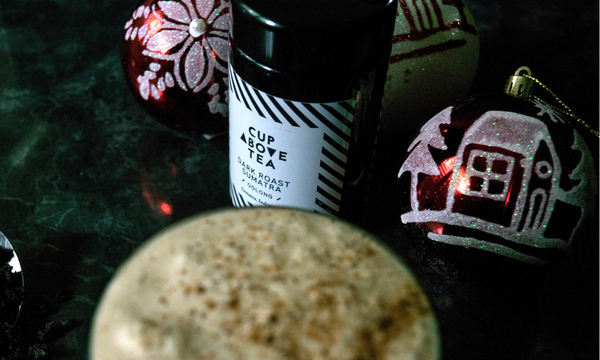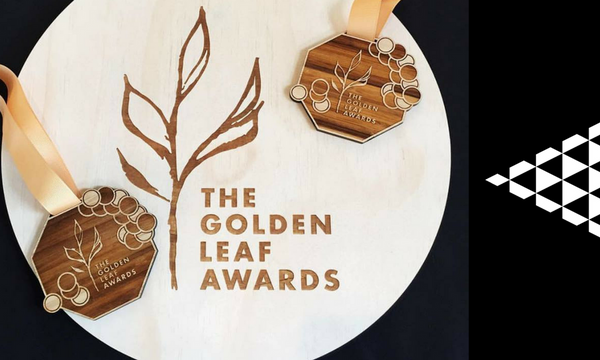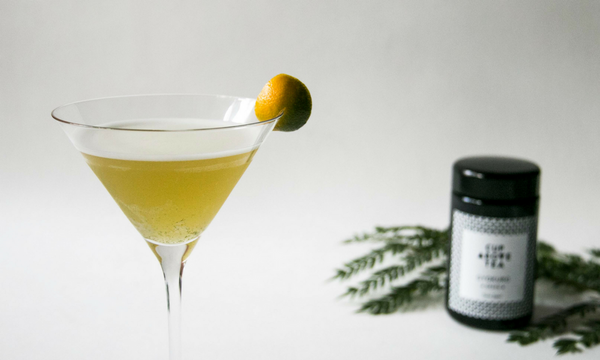How to train your tea palate

Certified Tea Master, Alison Dillon shares her top tips for training your tea palate so you can start identifying all those flavours described in tea tasting notes.

When I read the descriptions on the back of a tea jar, or a wine label for that matter, it sounds delicious, but when I actually go to taste, I find it hard to pick up what’s described. I mean, what on earth does ‘volcanic terroir’ actually taste like?
Being able to identify really nuanced flavours comes with lots and lots of practice. Tea is really no different to wine or beer or coffee in terms of the palate. If you think back to when you first started to drink any of those beverages, you probably felt white wines for example, tasted more or less the same.
After a while, you probably stared to be able to tell a fruity wine from a sweet wine. Then you gradually would have worked out what sort of wine style you enjoy most and within that style you probably really, really like a particular label or region and have explored that in more detail by buying and drinking it frequently. It’s the same process for tea. You start out by developing a general understanding of styles. Instead of champagne, white wine, red wine or port, you’d start with black tea, green tea, white tea and oolong tea.
Until you’ve started to really niche in and regularly taste and compare, you probably can’t expect to pick up the subtle flavours and notes instantly, but you can definitely use them as a guide and reference point to help direct your senses. If you do happen to have quite a well-developed palate from other beverages or from food, you’ll find that it’s readily transferable to understanding and appreciating specialty tea.
Sometimes people whose experience is drinking mass-market flavoured teas expect much bolder tastes from speciality tea. This is because the tea they drink is flavoured, either artificially or naturally. This sort of flavour is not something that comes naturally through the leaf, growing conditions, soil or craftsmanship of the tea master. It’s something blended or added from a bottle and it dwarfs any other characteristics the tea may have. Most of our clients who were once mass-market tea drinkers have discovered a completely different world of flavour through speciality tea and their re-educated palates can no longer tolerate flavoured tea – either natural or artificial.

Can you actually learn to become better at tasting or is your palate sensitivity more a genetic hereditary thing?
Yes, absolutely you can. Everyone has a different tasting capacity. My palate is still developing and every week I dedicate a solid chunk of time to improving my palate. Research out of Oxford University has actually identified that genes influence your tasting ability up to a certain point – the rest most of us can develop with a bit of practice.
That particular study compared ‘super tasters’ – those of us who experience the five basic tastes, (especially bitter foods), with much greater intensity, with ‘non-tasters’ or those who struggle to even identify the main ingredient of dish.
On the genetic side, which is what we can practice our way out of, variations of a specific gene (for example TAS2R38) encode our taste receptors that determine how strongly we taste bitter flavours. But on the non-hereditary side, there is an element of conditioning associated with flavour preference. For example coffee is a drink that is generally only liked after practiced consumption – not many young people instantly love the taste. Instead, they start by masking the bitterness milk and sugar or syrups. Repeated exposure is generally needed to actually start enjoy coffee and identifying the different flavour profiles. The development of such a taste preference is called “mere exposure effect”. In other words, it’s learned.
About 25% of people would fall under the ‘super-taster’ label, and 25% would fall into the non-taster category. For the 50% in the middle, all it takes is more focused education and attention to start breaking down taste to sense the nuances and distinct flavours described in tasting notes.

What do you do to train your palate?
Drink lots of tea. Actually, it’s not so much drinking tea, I swill and spit the tea. As you would do when tasting lots of wine, you allow the tea to rest in the mouth, but then I generally spit it out. If I didn’t do it that way the caffeine content would really start to impact me. I also find that it makes me focus more intently on mouthfeel of the liquor too.
I don’t just train my taste buds though. The mouth is actually only a fraction of what makes up taste. Aroma, flavour, appearance and mouthfeel are also key to unpacking a tea. I generally challenge myself to take appearance out of the equation for more rigorous training which makes the other senses work much harder. It’s amazing how much being able to see what you’re drinking influences you. If I can’t see the colour of the liquor it really helps to heighten the senses. With a more developed palate you can taste ‘blind’ which means you avoid knowing what you’re drinking so you don’t infer, make assumptions or take intuitive leaps based on what you think you know about the sample. This is often how sommeliers will train, but you will generally need the help of another person to prepare the tea if you want to go down the blind route.
If you’re just starting to develop your palate there’s no need to taste blind from the outset, rather it’s better to have all the reference points until you’re more familiar with general qualities.
You will also find me smelling, sniffing and inhaling. A lot. When I go to the grocery store I pick up the fresh produce and smell it. When I walk past flowers in the street I stop to smell them. When I walk into a kitchen I try and guess what’s been cooking. If someone has nice perfume I take the time to try and work out what I’m smelling.
The sensation of flavour is actually a combination of taste and smell. If you hold your nose and start chewing a jelly bean for example, your taste of that flavour would be limited and you’ll really only be able to identify salty, sour, sweet, bitter or umami tastes. If you release the hold on your nose midway through chewing you’ll be hit with flavour and can recognise that jelly bean as tasting of orange or lime rather than just something ‘sweet’. This is why when you’re sick or have a blocked nose, you tend to find food tastes bland.
To support my sense of smell I use an aroma kit which is a bespoke collection of scents typically found across the six categories of tea. This really helps with aroma recognition. It’s such a funny experience to smell a scent in one of the vials and have such a strongly familiar reference to it, but to not be able to identify it. As soon as you look at it on the bottle label, you have this moment of thinking ‘how on earth didn’t I realise it was that!’ The aroma kit really helps you to identify between very similar smells like musk and leather or lemon and lime.

Is there a special way to taste tea? Do you need to swirl and sniff it like you see people doing with wine?
In the same way as wine, you can taste in a number of different ways. You don’t have to swirl, slurp and spit, but if you want to get more serious about tasting tea – I’d recommend you do!
If the option is available to you, you should first inspect the dry leaf before it is brewed. There is so much you can decipher from the infused leaf. Be sure to smell the dry leaf too. Ideally, you’ll also know the temperature it is brewed at, as this will also influence the characters that come through. For example if a green tea, like a high quality Japanese Gyokruo, is brewed using boiling water you’ll be overwhelmed with bitterness that wouldn’t be coming through if that same leaf was brewed using 70 degree Celsius water.
The water to leaf ratio will also impact taste, so if you are tasting multiple teas with the intention of comparing them, make sure you use a consistent amount of leaf and water.
Once your leaf is infused you should stick your nose in and really let yourself experience the aroma. Inhale really deeply. Close your eyes even. Think about what you notice or where the smell takes you. So often smells transport you to a time, place, memory or situation and this gives you clues about what you are smelling. Is it floral, earthy, or sweet, like being at the beach? Or is it smokey or leathery like sitting in mahogany filled room with a fireplace?
Next, look at the liquor in the cup. Is it bright or dull? Pale or bold? Oily or clear? Coppery or brown, bright green or yellowish. These observations all tell you lots about what you can expect to taste. Tea actually has its own nomenclature, or language, which can help give you a wider vocabulary to use as your tasting becomes more advanced.
Next you can actually taste! Your first sip should actually be an audible slurp. Suck the liquor in quickly and loudly in an effort to spray the tea over your palate so it strikes the entire cross section of your tongue. This also helps to cool the tea too.
Hold the tea in your mouth for a few seconds. Let it sit and just observe how it feels in your mouth. Does it feel ‘heavy’? Some teas have a weight that makes them seem creamy. Others are light, and have an almost bubbly, carbonated feel to them. When you swallow the tea (or spit it out) breathe in again and assess the aftertaste. Leave it a few moments or even minutes to determine its length. How does your mouth feel? Is your tongue dry? For how long can you still taste remnants of the tea? What hits you first, what emerges more slowly? Finally, what sensation are you left with?
Take notes as you go through the process so you can compare and contrast your thoughts. You can either start comparing quote different tea types, like greens and blacks, or you could taste the same tea regularly to see if you can identify new elements. If you’re going to taste a lot of tea in the row, having some water crackers on hand can help to refresh the palate between tastes (avoid crackers with salt though) or try plain white bread or celery.

What tea should I start with to fast track my palate training?
It really is up to the individual. If you know you have a preference for a particular type, like green tea, and you’re quite happy to get to know that style better stick with a selection of greens. Perhaps try something from Japan like a Gyorkuo, a roasted Houjicha or a nutty Genmaicha, then something from China like a Long Jing, and perhaps something from India or Nepal like a high grown Himalayan Pine.
Alternatively try a tea-master selected regional tasting pack where you get a small sample of greens, oolongs, and blacks which is a great way to get exposure to different types of tea from different regions. Remember, there are no rights and wrongs and it’s a journey! As the saying goes, every journey starts with a single sip, or is that step?
Leave a comment
We would love to hear what you think. Leave us your thoughts on this article.
You Might Also Like...

Homemade Eggnog Infused with Oolong Tea
Oolong Tea Eggnog - the perfect festive tea-infused treat for the holiday season. It's quick, easy and screams Christmas!


